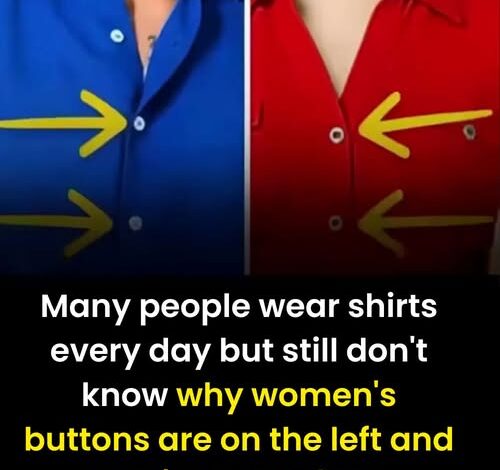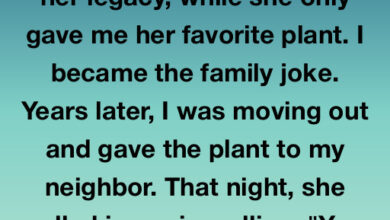
The Real Reason Women’s Shirts Button Differently from Men’s
The way we button our shirts may seem trivial — a small act we perform without thought. Yet hidden in that simple motion lies a map of history, gender, class, and power. The difference between men’s and women’s button placement — right for men, left for women — didn’t appear by accident. It evolved through centuries of social norms, practicality, and subtle symbolism that still lingers in our wardrobes today.
The Origins: A Mirror of Class and Convenience
In the 18th and 19th centuries, fashion was a language of status. For upper-class women, clothing wasn’t just attire; it was architecture — corsets, layers of lace, ribbons, and delicate fastenings that required assistance to manage. Most wealthy women didn’t dress themselves; their maids did. Because the majority of people were right-handed, it was easier for a maid standing facing her mistress to button garments that fastened on the wearer’s left side.
This design decision, born from practicality, quietly became a symbol of privilege. Left-side buttons signaled that the wearer moved in circles where others handled the everyday tasks. Over time, it evolved into a defining mark of femininity — soft, decorative, and dependent — while right-side buttons came to represent independence and self-sufficiency. Even today, when women dress themselves, the legacy of that distinction remains stitched into every blouse.
Men’s Buttons: Function Over Form
Men’s fashion evolved through an entirely different lens — one grounded in movement, battle, and readiness. In earlier centuries, men of rank often carried swords or pistols, typically hung on the left side of the body for a right-handed draw. Having buttons on the right made it easier to unfasten clothing swiftly with the dominant hand, especially during combat or defense.
Military uniforms played a major role in standardizing this design. As soldiers returned home, military cuts and closures influenced civilian style, becoming a symbol of discipline and masculinity. The right-buttoned shirt represented function, strength, and readiness — qualities admired in a patriarchal society. Even as weapons disappeared from daily life, the aesthetic of preparedness remained.
A Reflection of Gender Roles
By the 19th century, these differences weren’t just practical — they were ideological. Fashion designers began using them to reinforce social expectations. Men’s clothing emphasized straight lines, muted colors, and accessibility. Women’s clothing, by contrast, emphasized decoration, complexity, and restriction — buttons placed on the “other” side became part of that visual separation.
The message was subtle but powerful: men were independent actors, while women were ornamental and assisted. The simple act of buttoning up became a metaphor for social hierarchy — one group designed to be served, the other to serve themselves.
Industrialization and the Persistence of Tradition
When mass production began during the Industrial Revolution, clothing manufacturers could have standardized button placement. They didn’t. The gender distinction was too deeply ingrained in Western fashion. Factories began churning out left-buttoned blouses for women and right-buttoned shirts for men, reinforcing the divide even for those who no longer lived by class hierarchies or gendered roles.
By the 20th century, when most women dressed themselves and few men carried swords, the design no longer made logical sense. Yet it persisted — partly because fashion, like tradition, often resists change. People were simply accustomed to it. Manufacturers feared that altering the standard would confuse customers or seem improper.
Symbolism in the Modern World
Today, most people never question why their shirts button the way they do. But the distinction still speaks — not of servants or swords anymore, but of history’s quiet endurance.
Left-side buttons on women’s shirts echo the era when femininity was equated with dependence and refinement. Right-side buttons on men’s shirts recall a time when masculinity meant autonomy and action. The asymmetry is small, but it’s a living relic of social structure — a tiny thread connecting us to centuries-old patterns of behavior and expectation.
Even modern designers who challenge gender norms often play with this detail intentionally. Unisex brands, for instance, sometimes alternate or center their buttons to erase the divide entirely, making the shirt a neutral object again — one that belongs to the person, not the gender.
Fashion as a Mirror of History
Every element of clothing tells a story. Corsets whispered of control, top hats proclaimed authority, and the humble button — that most functional of fastenings — quietly documented class, gender, and habit.
What’s remarkable isn’t just that these details survive, but that we rarely notice them. When you fasten your shirt in the morning, you’re performing a ritual inherited from centuries of social engineering. That simple motion links you to noblewomen who stood still as maids dressed them and to soldiers who tightened uniforms before battle.
It’s a reminder that fashion is more than fabric — it’s history worn on the skin. Even a single row of buttons can reveal how human culture once divided labor, privilege, and identity.
So the next time you slip on a shirt and your fingers instinctively move to one side, pause for a moment. You’re not just getting dressed — you’re continuing a centuries-old story, one button at a time.




